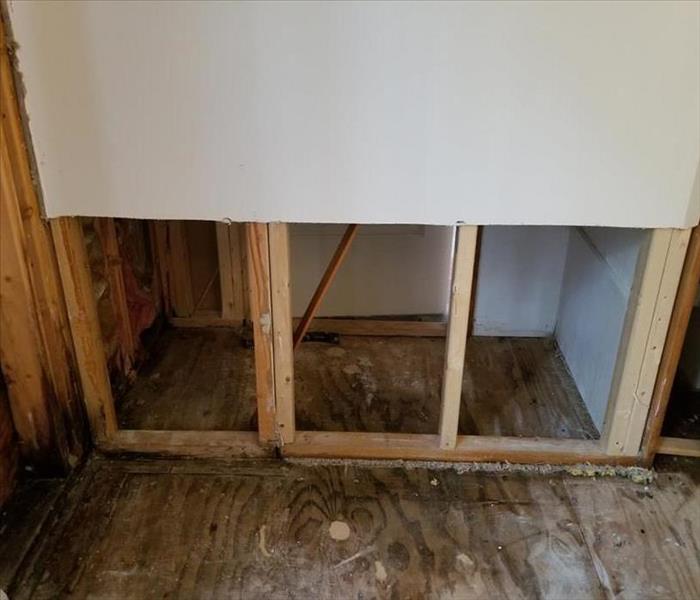What’s a Flood Cut and Is It Always Required?
3/15/2022 (Permalink)
 If the water has any sewage in it, they’ll have to tear out the portions below the flood cut, regardless of whether it got behind the walls.
If the water has any sewage in it, they’ll have to tear out the portions below the flood cut, regardless of whether it got behind the walls.
What Is A Flood Cut, And Is It Always Necessary?
Flooding is always a disaster. Every porous item it touches is going to be damaged or destroyed – even if it’s a clean water line break. Even worse, if it’s a large flood, such as one covering multiple properties, the water should be considered dangerous. Floodwater can have a variety of hazards, including:
- Sewage
- Chemicals
- Dangerous floating debris
Flood damage restoration experts in Virginia Gardens,FL, will determine the degree of damage to commercial buildings and decide what can be saved. The goal is to restore everything possible and replace when required. Tearing out walls is always a last resort, which is where a flood cut may come in.
What Is a Flood Cut?
Flood water can be nasty. If there is water contamination, everything it touches needs to be replaced. To achieve this, restoration technicians will cut out the drywall that’s been impacted by it.
To save time and money, they’ll leave the untouched drywall that's higher than the flood line in place, leaving a sharp line about 12 to 18 inches above the flood line to expose everything behind the wall below the cut. This is known as a flood cut.
When Is It Necessary?
Three factors are considered when examining wall damage caused by flooding:
- Is the water clean?
- Did it get behind the walls?
- Is there insulation behind the walls?
If the water has any sewage in it, they’ll have to tear out the portions below the flood cut, regardless of whether it got behind the walls. If the water is clean and did not get behind the wall, they may be able to fix the damage without a cut.
CLean water that gets behind the walls may sometimes be extracted without a flood cut. This depends largely on whether there’s insulation behind the wall. If there is, you’ll probably have to get a flood cut.
Flooding doesn’t have to be the end of your commercial property. Restoration technicians in Virginia Gardens,FL, can often return the property to its previous condition without replacing everything, and a flood cut is often part of the process.






 24/7 Emergency Service
24/7 Emergency Service